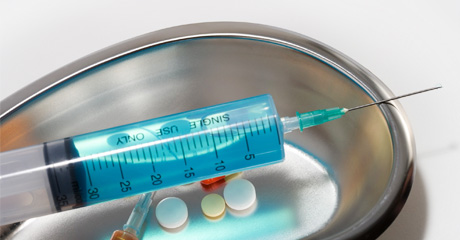In the next three years, China will launch innovative medical services from ten aspects

Xinhuanet, Beijing, February 8th (Sun Hui) “Innovate the medical service model and promote the high-quality development of medical services.” On February 7, Jiao Yahui, deputy director of the Medical, Political and Medical Administration Bureau of the National Health and Family Planning Commission, convened at the National Health and Family Planning Commission. It was stated at the regular press conference that in the next three years, China will carry out innovative medical services in 10 aspects, and strive to make diagnosis and treatment safer, more convenient to visit, more effective communication, more comfortable experience, and promote the high-quality development of medical services. The quality has improved significantly, and the people’s sense of seeing a doctor for medical treatment has further enhanced.
Phased results of action plan to improve medical services
According to reports, since 2015, the first three-year action plan for improving medical services has been launched in the national medical and health system. In the past three years, the national health and family planning administration, medical institutions, and medical staff have actively implemented various measures to see the people.
The “bottleneck” of medical treatment and innovative medical service measures have achieved initial results. It is mainly reflected in the four aspects of the widespread application of information technology, rapid improvement of medical quality, more accessible medical services, and steady improvement in patient satisfaction.
In order to effectively improve the medical experience of the general public, Beijing actively promotes and continuously improves medical services. Gao Xiaojun, deputy inspector of the Beijing Municipal Health and Family Planning Commission, said that in recent years, Beijing has seriously implemented the relevant requirements of the National Health and Family Planning Commission, continuously improved and improved medical services, promoted the development of high-quality medical services, and enhanced the sense of well-being and happiness of the people sense.
It is mainly reflected in the following four aspects: First, the appointment rate has been increased, and the consultation is more accurate. In order to make it easier for patients to make appointments for appointments, online appointments, telephone appointments, in-hospital appointments, and appointments within the Medical Association were introduced. Statistics show that the overall appointment rate of tertiary hospitals in Beijing exceeded 61.8%, an increase of 3.5 percentage points from 2016. The appointment rate of 22 tertiary hospitals in Beijing exceeded 86.2% in 2017, an increase of 7 percentage points from 2016.
Second, the use of the Internet, more convenient medical treatment. More than 90% of medical institutions in Beijing can provide the popularization of health knowledge, consultation, and self-printing of checklists. Most tertiary medical institutions can print X-ray films, and more than 60 medical institutions can make electronic payments while producing and publishing. The electronic maps of 111 tertiary medical institutions in Beijing, the electronic maps of 149 pediatric medical institutions and the electronic maps of more than 350 community health service centers were released.
Third, one-stop service, medical treatment is more simplified. More than 80 tertiary hospitals in Beijing have set up outpatient service centers to focus on receiving patient consultations, consultations and complaints. 225 community health service centers in 16 districts of the city have implemented a “first consultation, later settlement” model. The elderly who are over the age of the city need to pay personal medical service fees. Since Beijing implemented the medical reform on April 8, last year, nearly 19 million people have enjoyed this policy.
Fourth, pay more attention to safety and medical treatment. Beijing has set up 32 quality control and improvement centers covering hospital infection prevention and control, medical testing, blood purification, oncology diagnosis and nursing, etc., and regularly conduct assessments and quality inspections every year. There are 145 medical institutions and nearly 40 medical test items have achieved mutual recognition of results. At the same time, 70 well-known expert teams have been established in 15 Beijing-affiliated hospitals. Last year, more than 86,000 people were diagnosed with difficult and severe patients.
Ten measures to further improve medical services
At the end of 2017, the National Health and Family Planning Commission issued the Action Plan for Further Improving Medical Services (2018-2020). Jiao Yahui said that in the next three years, China will launch innovative medical services in 10 areas.
The first is to promote patient-centered multidisciplinary diagnosis and treatment;
The second is to innovate emergency services with emphasis on critical and critical illness. Within the prefecture-level cities and counties, qualified medical institutions establish chest pain centers, stroke centers, trauma centers, critically pregnant women’s treatment centers, and critically ill children’s treatment centers.
Third, provide continuous medical services based on medical associations. To form a hierarchical diagnosis and treatment pattern of orderly patient flow, medical resource deployment on demand, and integrated medical services.
Fourth, improve day-to-day services as the starting point, improve work systems and work processes, and promote the realization of divide-and-seek.
Fifth, with “Internet +” as a means, build smart hospitals around the needs of patients’ medical services.
Sixth, with “One Card” as the goal, realize the interconnection of medical information.
Seventh, to extend the provision of high-quality nursing services based on new social needs.
Eighth, relying on contracted services to expand new areas of pharmaceutical services.
Ninth, build a harmonious doctor-patient relationship with human services as the medium.
Tenth, the logistics service is a breakthrough, and patient satisfaction is improved in an all-round way.






